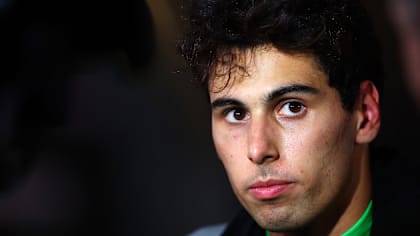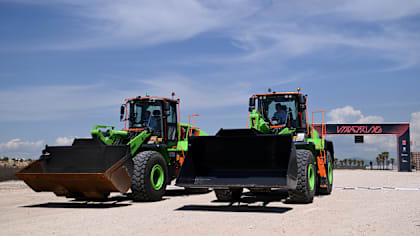
Feature
How F1’s feeder series dealt with COVID-19 – and prepared to go back to racing
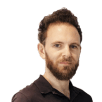
Share

Like F1, Formula 2 and Formula 3 have seen their 2020 seasons turned upside down by the coronavirus pandemic. But as the championships’ CEO Bruno Michel explains, it’s looking promising for a return to racing for F1’s feeder series in the very near future.
When it became clear that the 2020 Formula 1 season was going to take on a very different complexion at the hands of the COVID-19 outbreak, there was a knock-on effect for another set of drivers and teams itching to get back to racing action: those in the Formula 2 and Formula 3 championships.
READ MORE: F1 confirms first 8 races of revised 2020 calendar, starting with Austria double header
With their season due to start one week on from the cancelled Australian Grand Prix in Bahrain, the decision was swiftly taken to postpone that race weekend, before both the F2 and F3 championships, like F1, went into a kind of suspended animation, as the complicated tasks of reorganising the calendar, working out how to get back to racing, and keeping 21 revenue-deprived F2 and F3 teams afloat, were dealt with.
But dealt with they have been, with F2 and F3 announcing the initial part of their revised calendar earlier this week. But as Formula 2 and Formula 3 CEO Bruno Michel reveals, it’s been a long and arduous road to get to this point…

The F2 teams tested in Bahrain – but the race had to be postponed
Lending a financial hand
Once the decision had been taken to suspend racing activity, the first key task that Michel and his team had to face was making sure that, when racing resumed, there were still 21 operational teams who could go racing – and that meant putting measures in place to support the teams financially.
“The financial impact has been quite heavy on the F2 and F3 teams because most of the budget for the teams come from the drivers,” says Michel on the phone from his home in Switzerland, “which means that if there are no races, there is no revenue.
“We helped them financially by freezing all the invoices that they had been receiving for parts, for assistance, for everything that was due, and this is still on at the moment until we go back racing. We wanted to make sure we didn't put any cash pressure on the teams.
“At the same time, most of the teams also used the furlough system that was available in most of the countries, whether in Italy, England, France, Spain, so they could pay only the minimum part of the salaries to the employees of the teams to make sure that they were keeping everybody onboard and ready to go back racing when it was possible.”
WATCH: F2: Chasing the Dream documentary now available on F1 TV

One advantage for F2 and F3 is using the same suppliers for every team
Here, both championships were helped by the fact that they’re one-make series, using the same suppliers to provide technical equipment for everyone – although the cooperation of those suppliers was key to helping the teams weather the storm.
“Everybody played the game,” says Michel. “Our partners helped during all this period by… freezing their invoices towards us, whether it was Dallara, whether it was Mecachrome, Magneti Marelli, EM Motorsport…
“Some suppliers were solid enough to be able to do that, some others were not, so we had also to make sure that we were keeping the suppliers afloat… But what I can tell you for sure is that all the teams have been able to go through this crisis and they're all alive, which is a good achievement!”
F2 PODCAST: The Road to F1 – Bruno Michel
Staying in touch
Michel confirms that his schedule over the past few months has mostly involved hopping from one Zoom video conference to another, as he worked hard to keep the teams informed about when, and how, they might return to racing.
“We had [a lot of contact] with the teams, of course, because the teams wanted to have information – and most of the time, unfortunately, we didn't have much information to give them!” laughs Michel. “But we kept them in the loop of what was going on… I was talking one-to-one to the teams almost every day.”
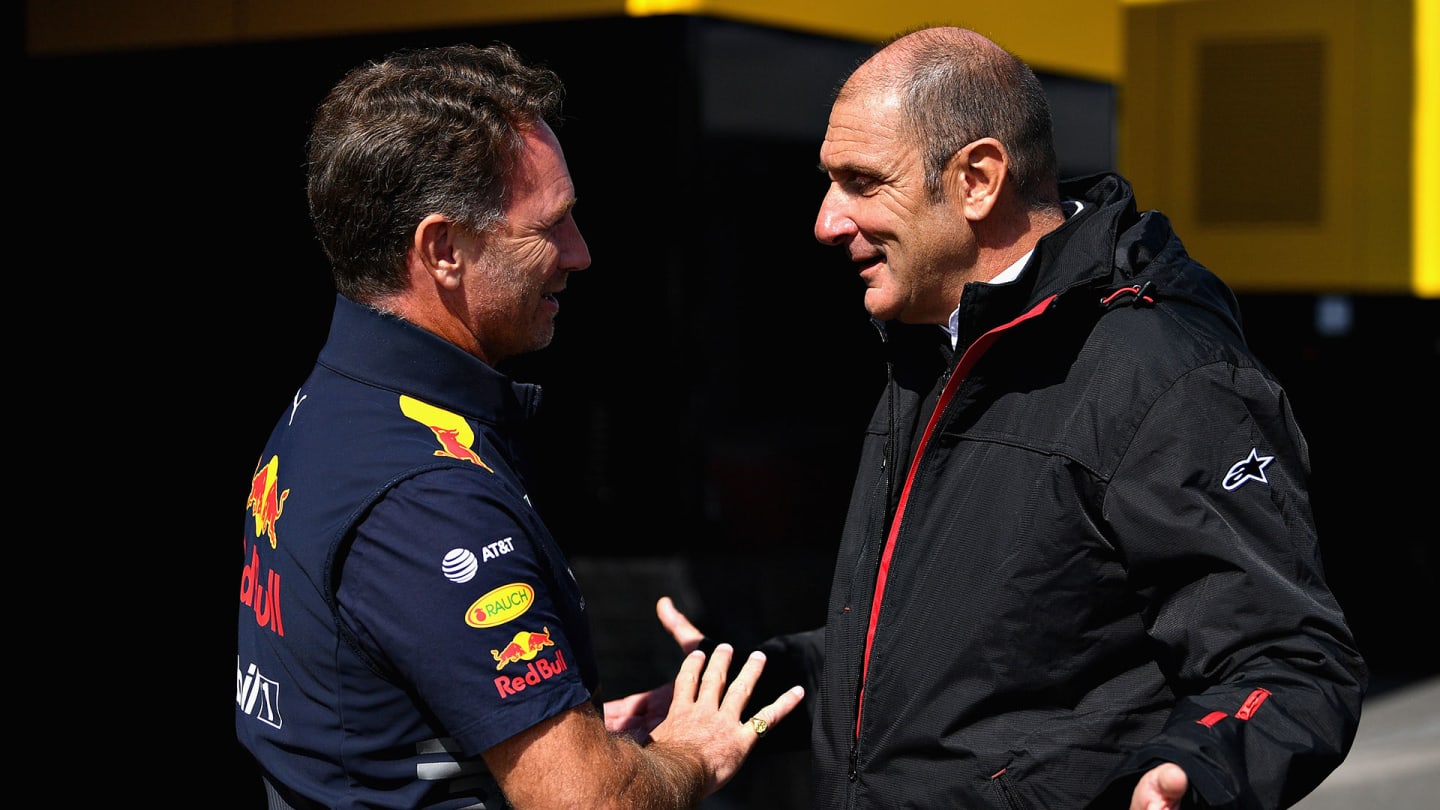
Keeping a dialogue open with F1 was key, says Michel, seen here talking with Red Bull Team Principal Christian Horner
Michel knew, though, that a return to racing for F2 and F3 would ultimately be determined by Formula 1’s decisions. Fortunately, however, the spirit of cooperation has been strong between the two parties...
“I would say we've been involved in the loop with Formula 1 very, very heavily and it was a very good thing,” says Michel.
“As you can imagine, it's much more complex for Formula 1 than for Formula 2 and Formula 3 to attend the races. Formula 1 is coming with more than 1,000 people, and we come all together between F2 and F3 with a maximum of 400 people.
"So I would say that they were absolutely leading on that, and they were passing us information when things were progressing and when things were not… The only message I passed to Formula 1 was that we would go racing as much as possible during the summer with Formula 1.”
READ MORE: F1 to be supported by F2 and F3 at all 8 opening races
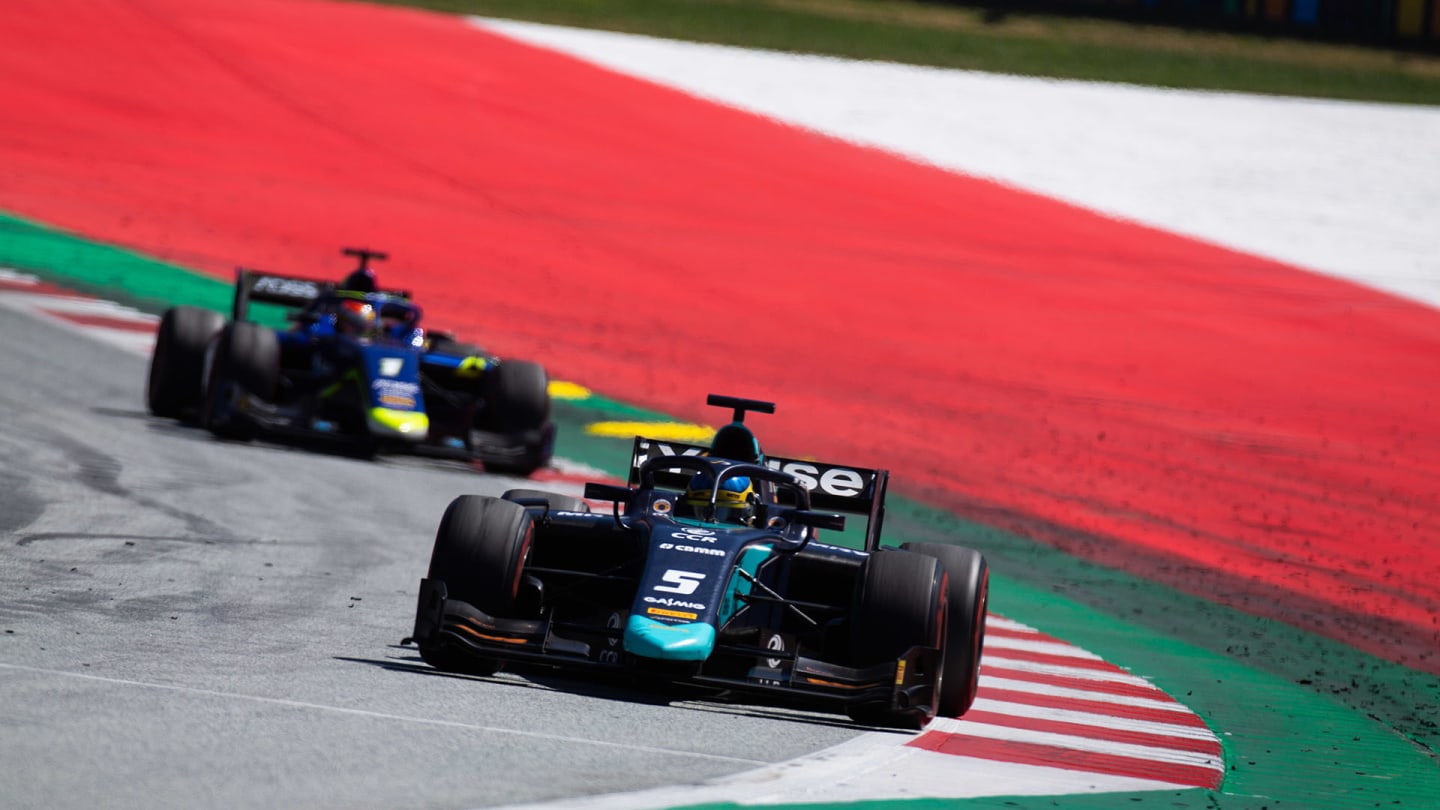
Like F1, F2 and F3's seasons will begin in Austria at the Red Bull Ring
There’s still work to be done on the calendar, though, and after announcing that Formula 2 and Formula 3 would compete at the first eight (fan-less) rounds of the F1 season, Michel’s next task is working out where the championship goes from there, and how to make a credible – and financially viable – season possible.
“We are still looking at what will be the second part of the calendar at the moment, and of course the second part of the calendar will be fly-aways, so that's something that we're going to work on with Formula 1 in the next weeks,” he says.
“What we are trying to achieve is to have a season that will look like the one that the drivers signed for a few months ago, so that the financial situation between the teams and the drivers is completely safe.”
WATCH: F2 racer Mick Schumacher drives dad Michael's title-winning Ferrari
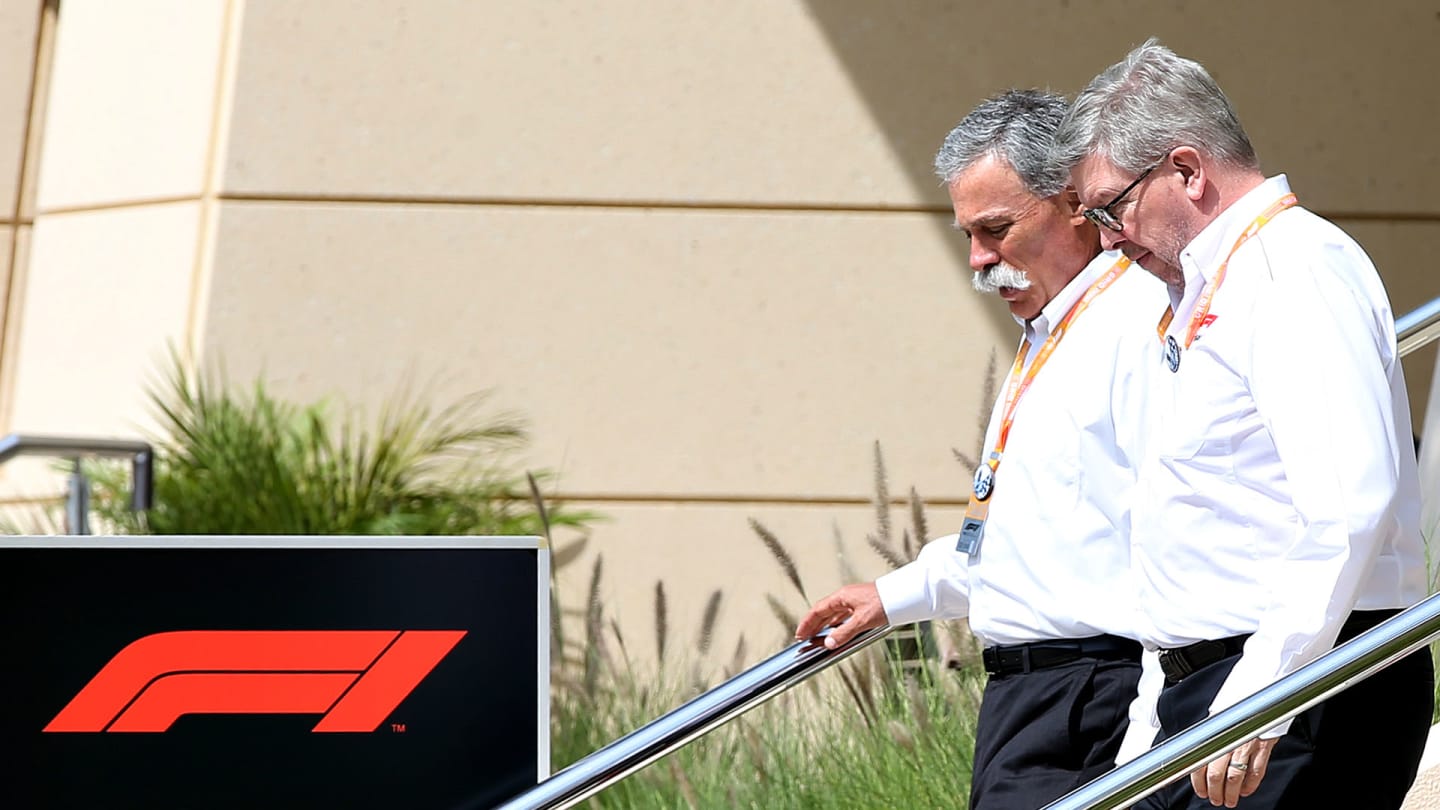
Michel knew that he'd need to follow F1's lead on returning to racing
Stepping into the virtual world
With all of this going on in the background, there was still the small matter of trying to keep F2 and F3's legions of fans entertained in the championships' absence.
But by a happy coincidence, last year’s F1 2019 game was the first to feature the Formula 2 series racers and teams. And with real-world racing suspended, and a bevy of bored teenage and 20-something pro drivers chomping at the bit for some racing action, it wasn’t hard to work out how to keep them occupied, with the Virtual F2 Racing series quickly launched to run alongside F1’s Virtual Grand Prix series.
“It's been quite fantastic for us,” says Michel. “Finding 20 drivers to do the races was quite simple, because everybody wanted to do it, so it's been a very, very good thing to put the community together, the drivers were working together, the teams were quite excited about it and on top of that, the broadcasters have been interested by our races, because they were, I would say, almost as spectacular as the real ones!”
WATCH: Arthur Leclerc seals home win in F2 Virtual Sprint Race at Monaco
Formula 2 even came away with some bragging rights from the virtual racing action, when UNI-Virtuosi driver and Renault junior Guanyu Zhou beat the likes of Lando Norris and Nico Hulkenberg to claim victory in the Bahrain Virtual Grand Prix…
Highlights: Spain Virtual GP F2 Feature Race
Getting back to racing
So, the teams survived, the first part of the calendar is established and the drivers are ready to step from the virtual world back into the real one. But just how exactly will F2 and F3 handle the logistical task of going back to racing – especially in a support race paddock famous for its community feel, where the drivers and teams regularly eat and fraternise together?
“It's going to be quite tricky,” says Michel. “We will follow exactly the same protocol that Formula 1 has defined with the FIA. But there are a few advantages we have, which is that number one, we've always limited the number of people per teams: there's only 12 operating people in F2 teams for two cars, and 11 in F3 teams for three cars, and it's always been limited, so it's easier to control.
READ MORE: F1’s racing restart – How will events differ and 14 other key questions answered
“The idea is to go racing exactly in the same way as Formula 1's going to go racing, with a cluster strategy where each team is working as a separate group, with no interference with any other groups.
“Inside the groups… we know that it's completely impossible to have, in a garage, between the mechanics and the engineers, the distance that is requested outside the garages. But on the other hand, [at least] every team will work in a closed environment.”
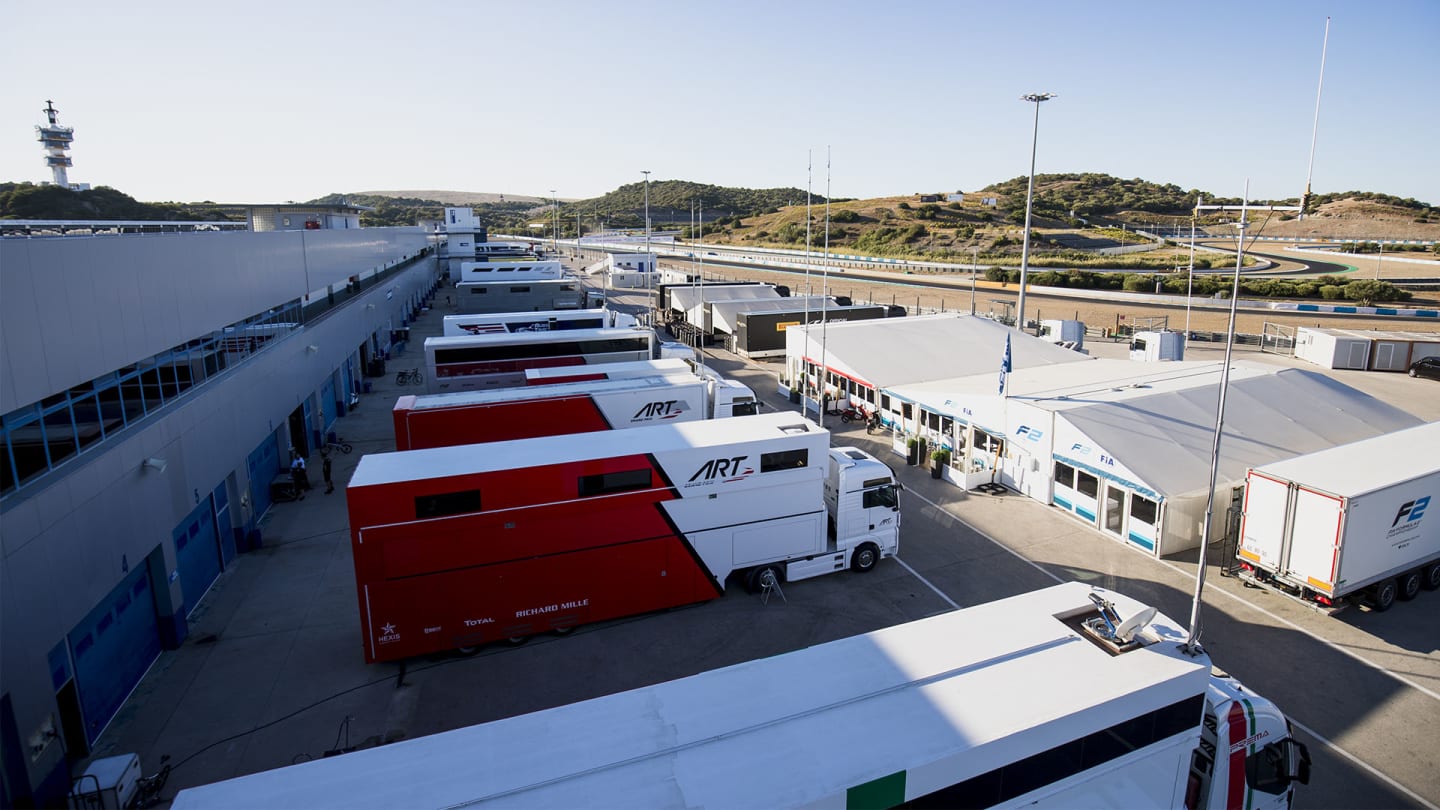
Changes will need to be made in the series' traditionally homely paddock
It’s easy to underestimate the minutiae that Michel and his team have to delve into in order to make going back to racing safe and feasible. Drivers’ briefings, for example, will now be done via Zoom. Scrutineering will be moved inside the F2 and F3 paddock, so that the teams don’t have to leave the paddock, while special procedures for the championship-provided spare parts service and track assistance will also be organised.
The championships' central catering service will still operate – and run between the two race weekends at double-headers as well, to limit the teams mixing with the local community in restaurants – but measures like single-use gloves will be mandated.
WATCH: F1 boss Chase Carey on the 2020 calendar, new regulations and commercial agreements
Dining times will also be staggered to keep numbers down – although, as Michel jokes, “this is not something that is too difficult because [usually] the English are eating at six o'clock, the French at eight and the Spanish at 10!”
One question mark remains over F2 drivers who have agreements with F1 teams to drive in Free Practice 1 sessions, with the current protocol meaning that they wouldn’t be able to fulfil their commitments, with mixing between the paddocks strictly forbidden – something that will be a blow to drivers looking to nab an available F1 seat in 2021…
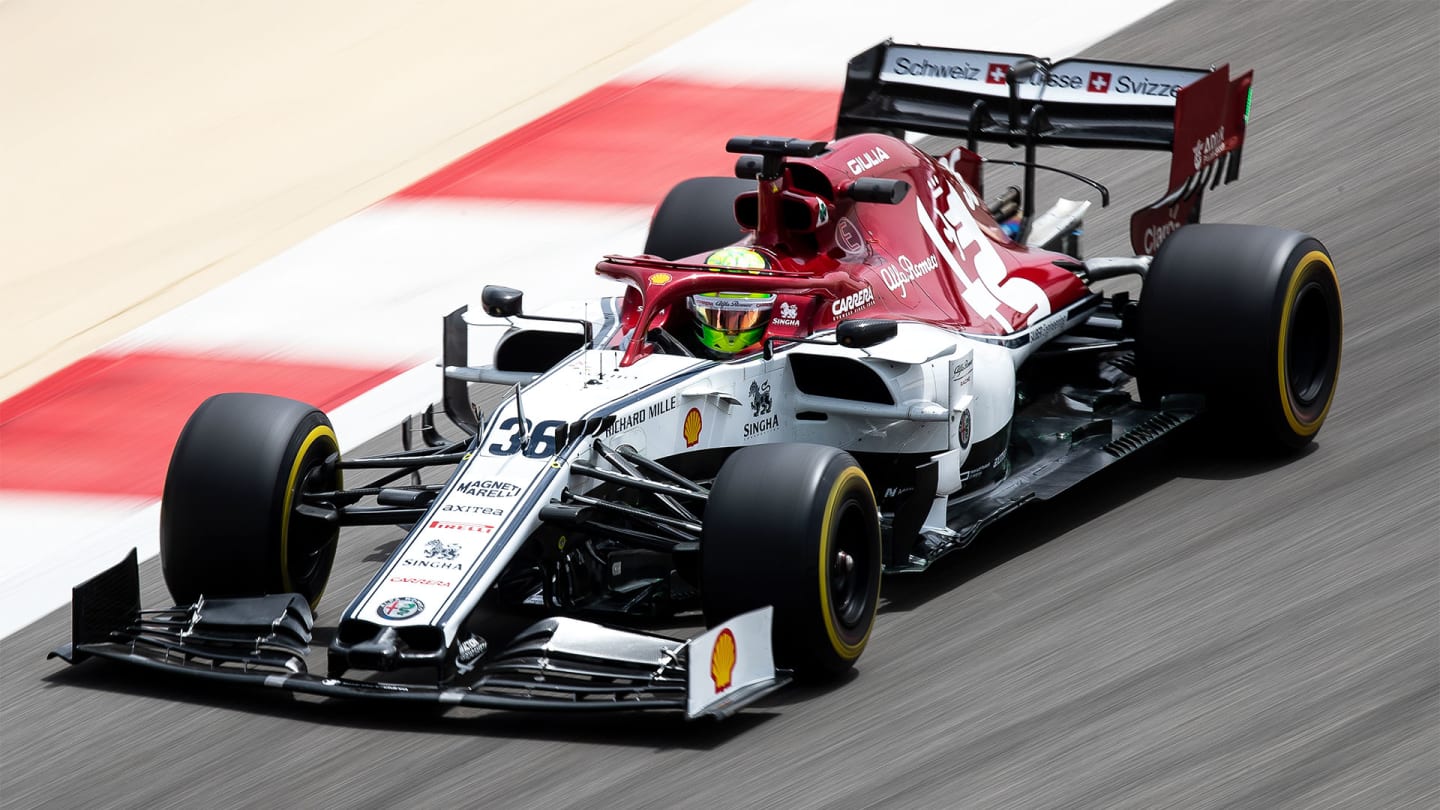
Any F2 drivers hoping to drive Free Practice 1 sessions for Formula 1 teams look set to be disappointed – at least in the early part of the season
So, at last, it’s nearly time for F2 and F3 to go back racing – and with his voice a mixture of enthusiasm and relief, Michel underlines his excitement at getting back to it.
“Everyone's thrilled to be going back racing, I tell you,” he says. “The only question the teams have been asking me for the last three months is, 'When do we go back racing? When do we go back racing?'!
“And we have a message for the fans which is that number one, we are absolutely sorry and even devastated that they're not going to be there at the beginning… But on the other hand, we are really happy to be able to give them some racing and some show that they will enjoy, because everybody is missing racing at the moment… The message to them is please continue to follow us, come back as soon as possible, and keep on enjoying F2 and F3.”
Share
YOU MIGHT ALSO LIKE
News Bayer admits Lawson left ‘sad and puzzled' by Red Bull seat swap as he predicts New Zealand driver 'will be back and he will be quick'
News Minor refinements to 2025 regulations agreed at F1 Commission meeting
News ‘It's all about patience’ – Bortoleto admits transition from F2 title winner to F1 backmarker is ‘not easy’
News Madrid begins construction of F1 venue as Carlos Sainz becomes circuit ambassador
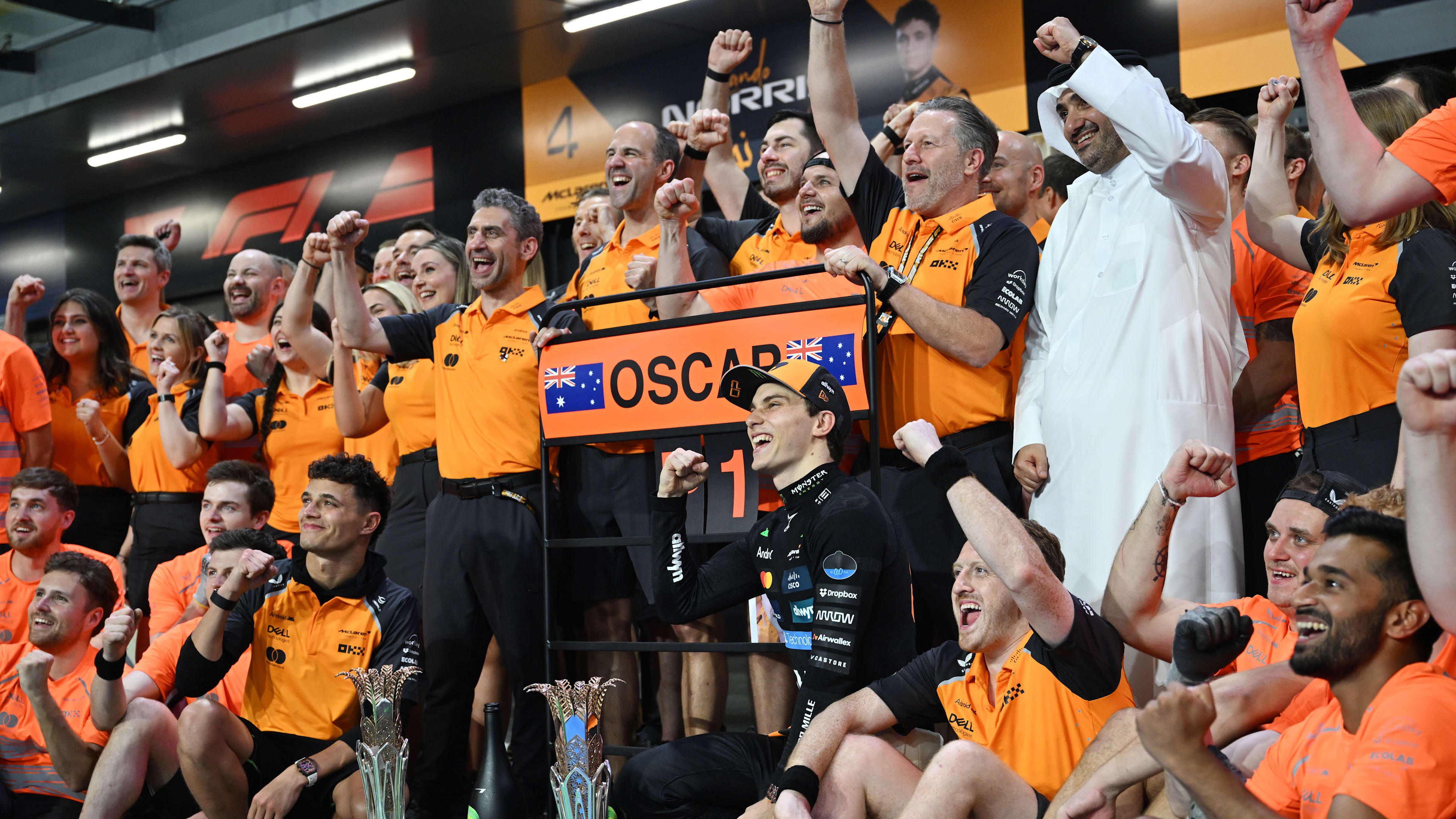

)
